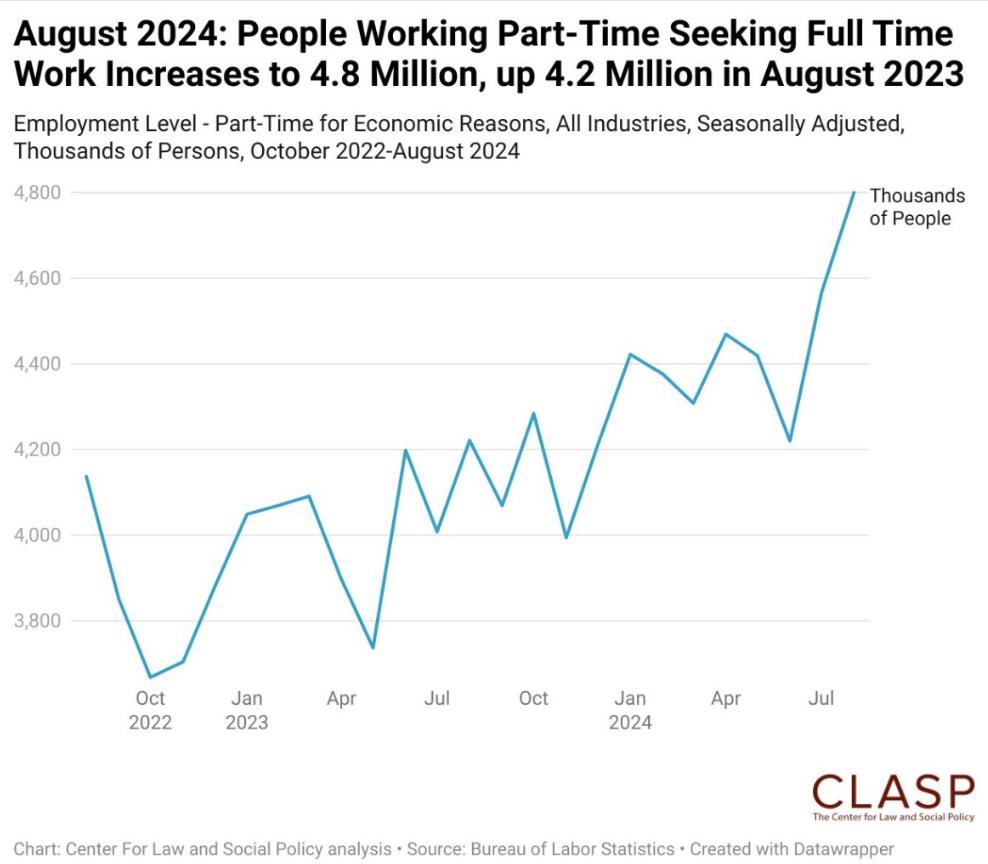
Interpreting unemployment data has never been straightforward, and the latest numbers are no exception. The narrative is shifting, and the rising cries of those stuck in part-time jobs while desperately seeking full-time work are growing louder. Recent figures reveal a troubling reality: we lost 438,000 full-time jobs while gaining 527,000 part-time positions. This “job growth” isn’t what it seems; part-time workers typically struggle to secure mortgages and purchase homes, adding further strain to an already fragile housing market.
While some may downplay this issue by attributing it to seasonal fluctuations—August often sees a significant decline in native-born employment, with previous years reporting losses of around 1 million—there’s a more alarming trend beneath the surface. When we examine the year-over-year changes, the numbers paint a stark picture: foreign-born workers increased by 635,000 in August, while native-born workers suffered a staggering loss of 1.325 million jobs.
Yes, you read that correctly: 1.3 million native-born Americans lost their jobs in August. The American labor market is far from strong, especially when we consider that much of the job growth over the past year has come from government sectors and healthcare—areas largely funded by taxpayers and not sustainable for long-term economic health.
Furthermore, the Job Openings and Labor Turnover Survey (JOLTS) data shows a concerning divergence between nonfarm job openings and the S&P 500. In 25 years, we’ve never witnessed a rising stock market without corresponding job growth. The disconnect since 2023 is alarming, raising serious questions about the market’s stability.
As the Fed’s Williams expresses a desire to delve deeper into the latest jobs report data, the looming uncertainty cannot be ignored. The market may feel like a circus, but for millions of Americans, this is a harsh reality that demands attention. The need for a sustainable, equitable labor market has never been more urgent.
Sources:
Unemployment data can be noisy to interpret
Hear the rising cry of people working part time jobs who are wanting and unable to find full time work: pic.twitter.com/MASdF1AsFo
— Amy Nixon (@texasrunnerDFW) September 6, 2024
The US lost nearly 500,000 full-time jobs in August, offset by part-time gains https://t.co/5WsETLsxVP pic.twitter.com/xB7SPZiASt
— Don Johnson (@DonMiami3) September 6, 2024
This is bad but not as dramatic as it sounds b/c native-born employment is highly seasonal and Aug usually sees a large decline of around 1 million ('17 was 1 million, '18 was 1.6 million, '19 was 700k) – since these datasets aren't seasonally adjusted, use Y/Y change instead: https://t.co/jzmNHxUahM
— E.J. Antoni, Ph.D. (@RealEJAntoni) September 6, 2024
@cvpayne @MariaBartiromo @SecYellen The American Labor Market is not strong, unless you consider the gain of Foreign Born Workers at the expense of Native Born Workers and the decline of the labor force participation rate to be strong, which I don't. https://t.co/8Ph2odcBTV pic.twitter.com/zmIEojxNCg
— Virgil Bierschwale (@VBierschwale) September 6, 2024
More than half of last 12-months of job growth has come from gov't and the gov't-dominated healthcare sector; it's all tax-payer funded, and it's not at all sustainable: pic.twitter.com/io6ezAWa7g
— E.J. Antoni, Ph.D. (@RealEJAntoni) September 6, 2024
JOLTS data total nonfarm job openings (in red) vs. S&P 500
In 25 years, we’ve NEVER had an increasing stock market without corresponding job growth
Note the huge divergence since 2023
This market a Circus.
What do we call people who wish to participate in a circus? 🤡 pic.twitter.com/320s10AULV
— Amy Nixon (@texasrunnerDFW) September 6, 2024